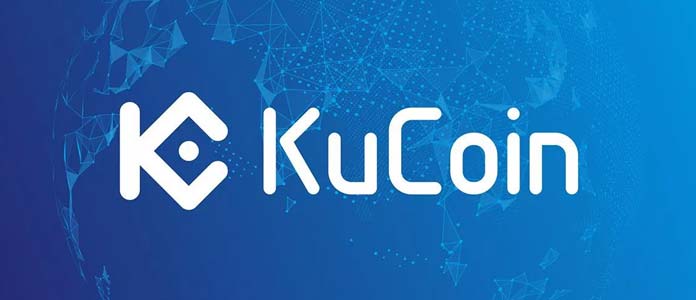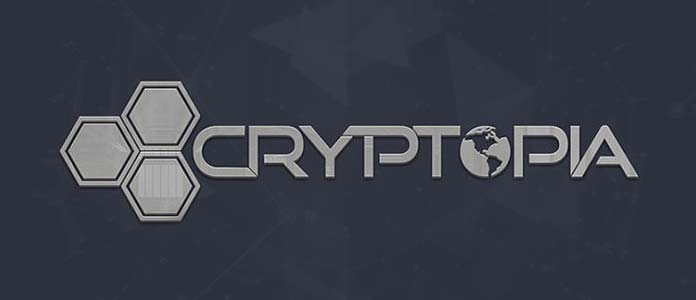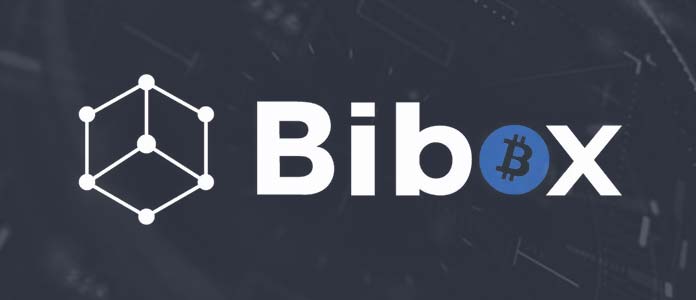Cryptocurrency Investing
Best ICO Investment Guide: Top 18 Initial Coin Offering Things To Know
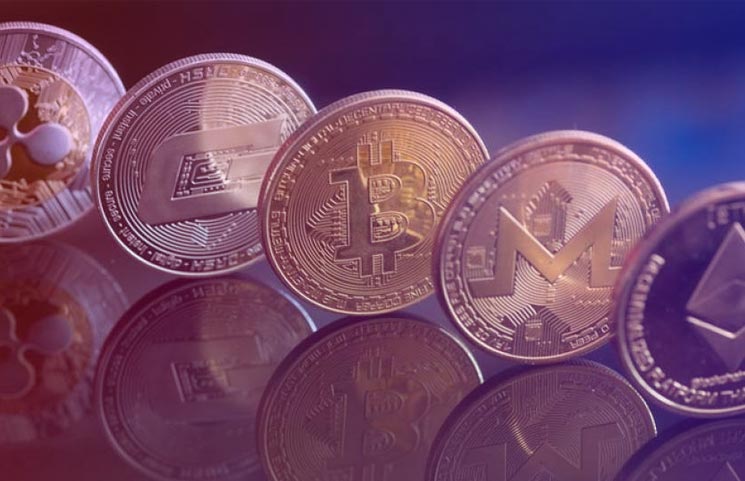
Initial Coin Offering Investment Guide
The use of smart contracts in the blockchain has opened the market to new cryptocurrencies. The Initial Coin Offering (ICO) craze of 2017 was a blow-back of smart contracts entering the cryptosphere, with startups offering tokens to fund their ideas. Before 2017, ICOs had already been gaining ground in the circles of technology and entrepreneurship, yet the end of 2017 is when it took a brave step forward and entered the mainstream consciousness.
The flurry of new coins and tokens meant that investors were spoiled for choice, as there are too many whitepapers and websites to thumb through to find the best ideas. In spite of the miasma of new ICOs, some managed the break records. The Tezos ICO raised an unprecedented $200 million dollars in funding. This amount eclipsed the amount that venture capitalists and initial public offerings (IPO) can muster, especially since initial coin offerings are so easy and cheap to launch. Unlike their counterparts in the traditional investment world, initial coin offerings do not come with payment schedules or interest payments. The lack of which means that developers do not need to pretend they are defector accountants, and can work on the project instead.
In spite of this optimism, ICOs are not without their risks. Governments around the world have warned their citizens to move away from initial coin offerings, as they cannot regulate them. The move by governments to ban ICOs was prompted due to the amount of scam companies that touted themselves as legitimate businesses. Most of those companies were nothing more than a crude snatch n grab to defraud investors.
In response, the Securities and Exchange Commission (SEC) ruled that the tokens issued during an ICO were classified as securities, and thus were under its jurisdiction of control. This meant that citizens of the United States were required to register as investors before buying any tokens. Other countries took a more aggressive stance; China and South Korea banned ICOs, while the majority of other countries issued warnings and put this fundraising method under review.
In spite of the fledgling amount of regulation that ICOs have attracted, the technology that powers the coins is powerful and disruptive for the entire industry. For this reason, there is always a possibility that an ICO could yield incredible returns for its early investors.
But how can you determine what ICOs are legitimate from those that are not? And which companies will offer you the best returns? These are two of the most important questions you should ask yourself before putting any money into an initial coin offering, and there are more to be answered.
Before Investing In An Initial Coin Offering:
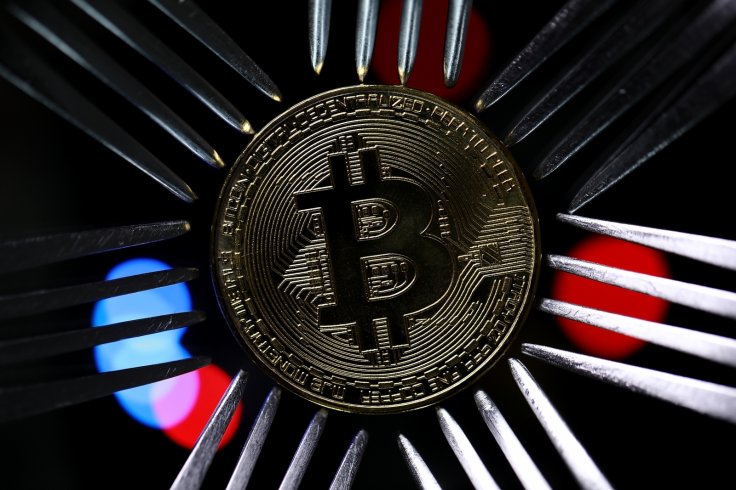
Below, you can see the most important features of an ICO to look out for, which should be considered as signposts that can guide you make the best investment decision possible.
Bitcointalk Thread
The Bitcointalk.org forum is one of the oldest and most reputable platforms in the space of cryptocurrencies. It was started by Bitcoin’s founder, Satoshi Nakamoto. Originally a forum to discuss the launch of the Genesis block for Bitcoin, it has since evolved to include all other coins. Founders of new cryptocurrencies can post a project announcement thread (ANN) in Bitcointalk. This thread allows members to ask questions and have their questions answered by the startup founder.
Due to Bitcointalk’s ubiquitous reputation, it could be a red flag when a developer avoids certain questions about the project or refuses to collaborate. Taking this a step forward, sending the founder a personal message can gauge how responsive they are.
Bitcointalk displays the rank and number of past messages each member has. If a member is new to the website or has a negative reputation, then this is something to keep in mind, but does not always mean that the ICO should be avoided.
Read through the posts left by other members carefully, especially those that contain negative feedback. Doing a quick search for the keywords scam or MLM will quickly reveal how legitimate the company is.
Stage of the project & Venture Capital Involvement
Consider the stage of the project before you invest. Do you only see a whitepaper or beta version? Will there be a finished project but with limited functions? Because when you put money into an ICO, you are essentially investing in a piece of software. For this reason, you’d want to see at least some of the code working before you invest.
Also, pay special attention to projects that have VC backing. Companies like Blockchain Capital or Fenbushi invest in high-profit startups. You can see if they are backed by one of these companies on the ICO’s homepage.
Is A Blockchain Required To Reach Its Goals? What Are The Tokens Used For?

For each new ICO, there is a token that’s created along with it. This then poses an important question: what will the token be used for? And why couldn’t they simply designate Bitcoin or Ethereum as the platform’s currency? The same questions need to be asked for why they will be using a blockchain to facilitate the goals of the business.
There should be a clear reason for why they are issuing tokens, besides as a source for revenue.
And how will a blockchain deliver value to its customers? What problem will a blockchain solve, or improve on an existing process?
Unlimited or Hard Cap
Economically, one of the most important things to consider when investing in an ICO is if it has an unlimited (open) cap or a hard cap on the amount of coins that will be issued. An unlimited or open cap allows people to send as much money as they’d like to its founder’s wallet address. The problem is what happens later: the more coins there are the less valuable each of them becomes via an inflated supply. On the other hand, some coins have a hard cap on how many tokens will be issued. A hard cap means that if a company’s idea takes off, the coins will be scarce and can later be sold for a significant profit.
So, from an investor’s point of view, a hard cap will almost always be better than an unlimited capped ICO. The only likely reason that a founder would set an open cap is if they wanted to get as much funding as possible, presumably to make off with their investor’s money.
But, not every open-cap ICO is a fraud. The project Bancor raised $150 million dollars in just 3 hours, although it resulted in no percentage gains of value for its investors.
Another caveat is that you don’t want to be the only person investing in the project either. If only a handful of people invest their money in an ICO, exchanges will have little interest in facilitating their trade. This would make these tokens harder to sell later.
Token Distribution – When And How
Something to look for is level of content distribution between its team members. Any figure higher than 50% should be considered suspicious. A legitimate project will show a correlation between its token distribution to the roadmap. This is because each phase of the project requires a certain level of funding.
Keep an eye out for the token distribution stage. Some projects will eject their tokens just moments after the ICO has ended. While other projects need a beta version first before sending the tokens to its investors. You can see this effect with the percentage gain of Ethereum. One year after Ethereum was released, it gained 5000%. While other projects such as Augur gained 1,500% in just a year.
Quality of Code and Github

If you have any programming experience, then you should make use of it when evaluating an ICO. You’ll be able to figure out the quality of the programmer and founder by the code posted. And if you are not technical at all, this will still be possible for you to get a feel for the competence of the team. Code should be well commented and organized.
Also, the length per function is another factor. A function that has more than 50 lines of code should raise red flags. Modularity matters as it makes the code more readable and up to date.
A good thing about ICOs is that the code tends to be open source. This means can increase the amount of trust between developers in the community, as well as collaboration for suggestions or improvements. It also opens the ability for commit logs, which is when a bit of code is pushed to Github’s code library.
Read the Whitepaper
The whitepaper is the most important piece of information released by an ICO. The document contains the ICO’s manifesto, mission statement, roadmap, token distribution and more. Due to how important whitepapers are, they need to be very well-written and contain all the relevant information for you to make an investment decision.
Usually, the content and presentation of a whitepaper can either make or break a company, and it goes a long way to showing whether a group is serious about their project. So, as an investor, you should read whitepaper as the first step in the investment process, and only invest money once you understand its business case fully. Also, it’s important to look at the little things. Some firms can exaggerate facts about their project, or the perceived demand for their product. Following a due diligence process and fact checking then becomes a pivotal skill for ICO investors.
Learn More About The Project Developers

Related to checking the whitepaper for facts and inconsistencies, you should also read about the team behind the project. You may find that most of the team members will be new to market, so they won’t have a significant background in either the blockchain or startups. However, you come across some people who have worked on similar projects in the past.
Once you have identified who the members are, the next step is to do a form of background check for each person. You should be looking to verify the members’ expertise and credentials, as well as experience in the industry. A new team that lacks experience is certainly a red flag.
Also, some ICOs are held by established companies that want to issue tokens to raise capital income. If this is the case, then review the parent company and how the ICO will fit into its mix of products or services. There should be a clear synergy between what the business is doing already to what their ICO will allow them to do. Do they have existing customers they can sell their idea to already? Do their products allow for an easy upsell or cross-sell for the ICO product? If this is the case, it should be taken as a positive sign. Investing in established companies typically leads to greater payoffs later down the road.
You may see situations where the start-up companies will not disclose the names or positions its team members. This is another red flag. If the company is not transparent about who is working for them and who is managing it, why would you buy tokens from them? Usually, if a company is hiding this information from its investors, then it means that the venture is most likely a scam. Any legitimate company would do everything they could to prove that they are honest and reputable.
What Are The Long-Term Uses For The Tokens?
Tokens that are sold off for the singular purpose of raising money don’t offer investors a lot of value. In this case, investor only benefits from the resale value of the token, but then their value might not be worth it. A good ICO should give additional benefits to investors, such as a way to get premium or additional services from the company.
So it’s recommended that that you look at the long-term value of the tokens you are interested in. The tokens should offer more to you than a higher resale price, and something more to the company than just a way to raise funds.
Read What Other People Think
When it comes to investing in an ICO, reading through the second hand opinions left by other people is important. It’s not uncommon to see initial coin offerings posting threads in different forums that cater to cryptocurrencies. You can also see them post on social media such as Facebook and Twitter. With these platforms, you can read through the comments and feedback left by other investors, and ask your questions to the management team.
Read through all of the presentations the team has posted, and keep an eye out for red flags along the way.
Consider The Road Map And Future Plans
Companies that take the time to develop realistic road maps are always a better choice. You need to understand when the project started and where it’s going in future. How long will it be until the project starts making money? And what are the founder’s plans after the ICO has ended?
A red flag here is if a company wants to offer a service for a limited amount of time, with no further investments or ideas planned beforehand. This means that the founders are thinking only in the short-term, making these projects poor choices for potential investors.
Fund Transparency
When you put money into an ICO, you are attempting to stretch your dollars as a far as possible to get a decent return. A good ICO investment consists of putting money into companies that are transparent about how your money will be used, and how they intend to grow your funds for you.
Important information here is that they need to disclose the number of tokens released, and how many of those tokens will be sold during the pre-sale and post-coin offering stages. Also, what percentage of the proceeds will go to the team members, and how much are they paying their affiliates (if any). A startup that is in this for the long-run will be happy to share all of these details and more, and will even provide graphs and charts to show how the funds will be distributed.
Page And Image Design
The website of a business is the company face for potential clients and investors. Due to this fact, it’s recommended to examine how a website is set up, and what kind of user experience it offers. While you shouldn’t expect to see a website that looks like it cost a million dollars to setup, a quality startup will invest in a quality website.
While this may seem trivial at first, the quality of the site will be determinant factor in the success of the company. Just like the whitepaper, a lack of attention to detail with the website means that the founders are either unwilling or unable to invest in page design or market for their business. This could then set a dangerous trend for how they conduct their ICO once the funds have been raised.
Mining Should Not Be A Priority
If you come across an ICO that has an emphasis on mining and pushed throughout all aspects of the ICO, this is usually a red flag. This means that its developers did not design any other feature to represent the ICO in coins, and know that mining could help drag in new investors.
It’s worth restating that mining is only a process that helps the currency function. Mining is not the actual use of a currency, nor is it the sole feature.
Market Capitalization

Just as we described the differences between a soft cap and hard cap, when putting money into any asset it’s vital to see what the market capitalization is. If you value your investment dollars, it’s important to look for an asset that will lead to long-term gains and adoption by a certain market. The two things you should look for in an investment are for them to be both under-priced and under-capitalized. This means you can get these investments for the best possible return. If the market capitalization is well above what an asset is actually worth, this can lead to a significant price drop to stabilize its intrinsic value.
For example, imagine that company X plans to sell a product of 100 units per year and has a limited market to sell to. And the maximum amount of profits that the company could make is 1 million dollars.
If this company were to run an IPO and it made 50 million dollars within its first day, no matter how well the production or the products of the company the, the assets in the company will remain heavily overpriced. In the majority of cases, this is what leads to an aggressive price correction.
The key here is to try to find the coins that have a decent market capitalization without being oversaturated. You don’t want to invest in coins that are either too popular, or not popular enough. This is why most people consider the planning the research stage of finding an ICO the most important of all.
Go For Disruptive Ideas
You should look for ideas that are original, feasible, and disruptive. Far too many ICOs have made the mistake of being another “me too” of an existing project. ThIs results in only a marginal amount of value created for the business, as it can only be cheaper, faster, or better in some way. Unless an ICO provides something truly unique, the chances are that these startups will compete with what’s already on the market, as opposed to offering something truly innovative.
In short, the product or service of the project must address a real need and offer real solutions. Look for ideas that truly change how things are being done today through the strengths of the blockchain.
Understand The Target Market
It’s critical to place the company, its technology, and the product or service in the view of their target market. It’s inevitable that they will be subjected to the pressures of the market and regulation for their given industries, so it’s important to know the environment, as this will give you an idea of the challenges and opportunities for these ventures.
As an example, a healthcare company that is using blockchain technology may be a great concept to invest in, especially since there are a now laws that require drug manufacturers to have tracking and record keeping systems in place. However, the largest and most established players are also eying this space carefully, which means that small startups will face severe competition.
Bonus: Discern Your Appetite For Risk
Like with any other investment, it is critical for investors to honestly evaluate their own appetite for risk. Unlike IPOs where companies have typically been around for years, if not decades, many startups are in their early stages, with some not even operational. This means there is a lot of risk for potential investors. And there is always a chance for investors to lose money if the venture is unsuccessful.
The figures posted by ICOs also are not reliable indicators for a venture’s viability in the market. Some ICOs have raised significant amount of money, only to be scrutinized later for their lack of progress in getting the ICO off the ground. Therefore, ICOs will always be high-risk, high-reward investments that have no guarantee of success. So you should know how much you are willing to invest and lose before participating in one.
Cryptocurrency Investing
MetaMask: Ethereum ERC20 Token Wallet Browser Extension Beginner’s Guide
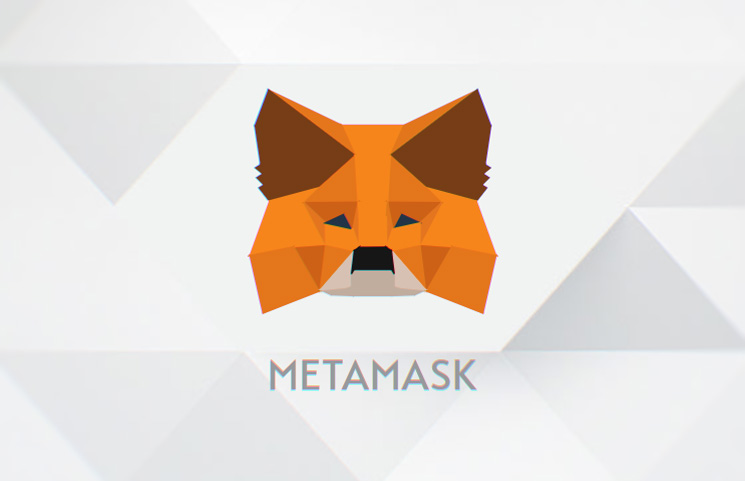
The Beginner’s Guide to MetaMask
For those new to Ethereum or perhaps even cryptocurrencies in general, the name MetaMask has probably already popped up in conversations. MetaMask is essentially a browser extension, and acts both as a wallet and access point to the Ethereum network. Explained even simpler, MetaMask is a hot wallet.
On the blockchain cryptocurrency networks, users can opt for a hot wallet (“live” or actively connected to the network) or a cold wallet (disconnected from the network). A wallet is necessary to store personal altcoins off exchanges or anywhere else after trading or transacting.
Although many early exchanges act as a bank for digital traders, current wisdom dictates that users maintain their funds offsite. In addition, a user will very often need to fund a trading account from a wallet, as many don’t allow for fiat or legacy payment protocols.
There are pros and cons to both, and current trends see most users employing the duo as their needs dictate. A hot wallet can be accessed and pilfered through phishing or user error, whereas a cold wallet is dead to the network, allowing no access at all. A cold wallet is also sometimes called a vault, as it’s silent, secure and access-restricted.
Many users will encounter the name when looking at ICOs, because ICOs are dominated by the ERC-20 token protocol. ERC-20 is a “type” of token, developed and employed on the Ethereum network, that has proven the most malleable and compatible token structure for crowdfunding purposes. The vast majority of ICOs, while employing their “own” tokens, are actually building those tokens out of the ERC-20 protocol.
MetaMask Details

Looking at a few nuances of the wallet, since it is an organic build from the Ethereum network, the MetaMask wallet will only hold ETH coins and other ERC-20 tokens of whatever origin. Bitcoin, for example, cannot be held in a MetaMask wallet.
The other major component of MetaMask is that it is a gateway to the Ethereum network. What this means is that all of the network’s dapps are available to use for MetaMask wallet holders. Dapps are “decentralized apps” and so named because their backend code is running on a decentralized network, in this case the Ethereum network.
If dapps seem obscure, examples would be the game Cryptokitties or casinos like Etheroll, a marketplace like OpenSea and of course digital exchanges like ForkDelta and IDEX.
Without a middleman like MetaMask, a PC’s browser can’t access the Ethereum network. Not unless a user runs a “full node” and installs the whole 400GB Ethereum blockchain on their PC.
The reason why MetaMask is known as a browser extension is because MetaMask injects a javascript library in your browser page. The javascript is called web3.js and written by the Ethereum development team.
Installation and Setup Of MetaMask

MetaMask is “open source,” which means anyone can view the code on GitHub. Currently, MetaMask functions on the FireFox, Chrome, Brave and Opera browsers. Links to MetaMask extensions for all relevant browsers are readily available on the MetaMask homepage. Once installed, the MetaMask logo will appear in the top right of the screen. Chrome, for one, will typically ask you to enable an extension, but these steps are all linked and users are done with a MetaMask installation in a minute or two.
Users don’t require a username when registering a MetaMask wallet, only a password. With MetaMask, a user’s password is called a “DEN.” although a clever play on words, since the logo is a fox’s face, although this appears to be more coincidence than any deliberate naming.
After creating a password, users are issued with a unique 12-word “seed phrase.” This is a bunch of words employed to safeguard a user’s account. It’s recommended that users stash their seed words in a competent password keeper like LastPass, or similar apps. Users can also generate multiple MetaMask accounts. Every account created by a user with MetaMask will share seed words and the password, but will have a different address.
Transacting With MetaMask

Paying someone or otherwise dispatching tokens from the MetaMask wallet is a simple matter. A single click on “Send” allows users to populate the subsequent screen with a user address. Send the funds and the transaction is done, and users receive a confirmation once the transaction is completed.
When interacting with dapps using MetaMask, provided a user is logged into their MetaMask account, they can access Ethereum network dapps automatically through their browser. Logging into a dapp like OpenSea, for example, the decentralized outlet for crypto collectibles, the dapp notes a user’s MetaMask address. There is no need to log into dapps separately, as the network has user intel integrated, recognizing an account holder wherever they go on the Ethereum blockchain.
MetaMask is free to use, users paying only the “gas” cost – the base cost of transacting on the Ethereum network. Gas is the fee required to effect any transaction on the Ethereum network. It is denominated in “Gwei,” one billionth of an ETH. Looking at overall UX, MetaMask is a reputable offering, with good support and a welcome absence of any dark press.
Protecting Your MetaMask Account
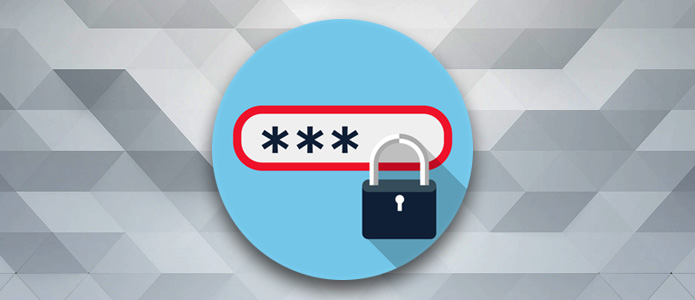
How Safe is MetaMask? In the world of cryptocurrencies, security is top of the list. Constant hacks and successful phishing attempts keep making the papers, while legislators are still battling to bring regulation up to the same level as legacy fintech. Since cryptocurrency thefts cannot be undone by identifying the thief and reclaiming funds, users should always have security uppermost in their minds when employing their MetaMask wallet.
It is advised to log out of a MetaMask account when it’s not being used. When a user is logged in, the account is considered “unlocked” and more vulnerable than when shut down. Open MetaMask accounts enable crooks to glean a user’s wallet address, token types, the wallet balance and especially transaction history.
Don’t be fooled into thinking that phishing can only happen via mail, however. Users should be aware of suspicious pop-ups or other notifications while signed into their wallet, as this can also be indicative of a phishing attempt.
Things like irregular pop-ups that ask a user to sign for a pending transactions are high risk. So too are messages telling users that their last transaction failed, then rerouting the repeat transaction to a different address. Much like cyber criminals emulate bank UIs and present with all the right logos and all the right colors in place, so too have there been instances of phony interfaces emerging.
For the best secure arrangement, users would employ a cold wallet like Ledger or Trezor Model T. For human reassurance, keeping the bulk of one’s altcoin holdings in a cold wallet can’t be beaten. That said, MetaMask has never suffered a hack nor had other instances of bad, sad press around lost funds and theft. To date, the wallet is impervious, and user losses stem from phishing attacks for which MetaMask can’t be blamed.
MetaMask Conclusion
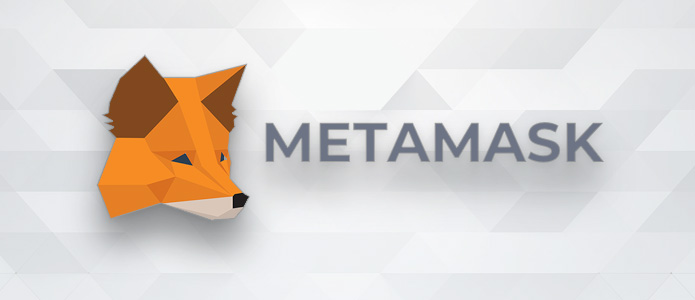
MetaMask is elegantly simple and easy to use. The wallet-stroke-network enabler has become the most popular and convenient route to navigating, paying and trading on the Ethereum network. Standing back and looking at the offer as a non-technical or, rather, non-crypto person might, as an offer it’s very simple and easy to install.
Even newcomers can quickly grasp the essence of it and get on with interacting on the Ethereum blockchain. MetaMask is intuitive and has been elegantly simplified because of its homegrown Ethereum nature. Any hot wallet, however, carries a higher risk than any cold wallet, and users should always have caution in mind when transacting via the wallet.
You can read more about MetaMask here: metamask.io
Cryptocurrency Investing
Top 6 Cryptocurrency Exchanges Using Own Coins For Reduced Fees

Best Cryptocurrency Coins Which Grant Dividend Or Reduced Fees In 2018
The cryptocurrency space has gained incredible momentum in the last few months. This is fueled especially by the existence of coins that not only earn dividends for the owners but also earn passive income while at the same time offering very low transaction fees.
Table Of Contents
6 cryptocurrency exchange coins and tokens that make money in the Crypto sphere are discussed below in detail.
KCS is a native token owned by KuCoin Cryptocurrency Exchange which is based out of Hong Kong. A total of 100 Million tokens of KCS were distributed during the KuCoin Initial Coin Offering (ICO) in 2017. KCS tokens are fundamentally ERC 20 tokens. The current value per token of KCS is US$ 4.78 and the market capitalization is approximately US$ 435 Million.
Holding KCS tokens is extremely advantageous for both Holders and traders. KuCoin Shares have a reward ratio for the holders. 10% goes to KuCoin, 50% goes to the KCS holder and 40% belongs to the referred individual. 10% of the Exchange`s profits are used in buying back the KCS and then burning the tokens. This means that KCS holders are further rewarded due to the appreciating prices.
Furthermore, Owners of KCS receive 50% reduction of the platform`s trading fees on all the volumes in the Exchange. Due to the referral system at the KuCoin Cryptocurrency Exchange, owners of KCS receive higher passive income.

Binance (BNB) Token
BNB is a native coin that is owned by Binance, which is one of the best cryptocurrency exchanges in the current Crypto market. Binance exchange was developed in China but relocated to Japan in September 2017. BNB has a current market value of US$ 11.82 and a market capitalization of US$ 1.3 Billion.
BNB is also an ERC 20 token with a fixed supply of 200 Million. During the Initial Coin Offering (ICO) in 2017, the BNB token was generated to fund the development of Binance Exchange. Owners of BNB token use it to pay for fees on the Exchange`s platform. These fees include withdrawal fees, Listing fees, Exchange fees and any other applicable fees.
Binance buys back 20% of BNB tokens in every quarter which the Exchange then burns until the total circulation reaches 100 Million. For holders of BNB, the total cost of trading at the platform is reduced by 50%. The owners of BNB also receive regular dividends when the BNB tokens are regularly burnt every quarter till the total supply goes back to 100 Million. The increased daily volumes at the Exchange further increase the benefits by providing an increased passive income.
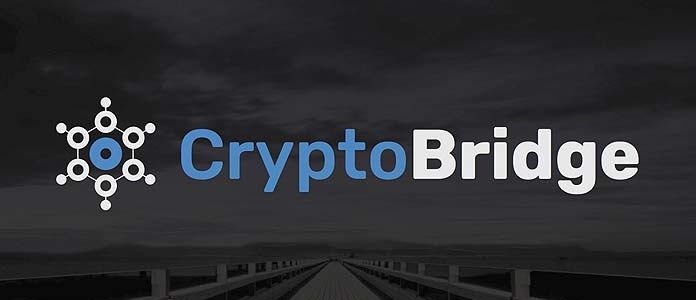
CryptoBridge (BCO) Coin
BCO is a native crypt-compatible coin created in July 2017. It is owned by the Decentralized Cryptocurrency Exchange (DEX) called CryptoBridge Dex which allows trading of most of the popular Altcoins. This Exchange utilizes the multi-signature federated gateway.
BCO coin is mineble and unlike KCS and BNB, it is not an ERC20 coin. BCO Coin has a current market value of US$ 1.64 and a market capitalization of US$ 45Million. Holders of BCO get 50% of the share bonus earnings of CryptoBridge Exchange when they stake their BCO coins.
For 3 months they receive 20% bonus, for 6 months they receive 50% bonus and for 12 months they receive 100% bonus. However, staking their coins for 1 month yields 0% bonus.
COSS Token
COSS is an ERC20 token that is owned by COSS Cryptocurrency Exchange located in Singapore. COSS exchange has matching features like Binance and KuCoin Exchanges. The Exchange is unique since it embraces plans of being a USD Exchange as well as payment processor.
The current market value of the COSS token is US$ 0.29 with a market capitalization of US$ 23 Million. The COSS Exchange retains and validates all the transactions that are initiated at the platform on the Ethereum Blockchain.
COSS has a great dividend program. The holders of the coin are paid 50% of the total earnings from the Exchange trading fees on a weekly basis. Additionally, holders can store their coins at the COSS Exchange platform or at an ERC20 enabled wallet such as MyEtherWallet.
CEFS token is another dividend earning token that is owned by the Cryptopia Exchange which is one of the most popular digital Exchanges trading numerous Altcoins. Cryptopia is headquartered in New Zealand.
CryptopiaFeesShares are very expensive and rare. The current market value is US$ 1,816 per token with a total supply of 6300 CEFS. The Cryptopia mining platform for cryptocurrencies is well streamlined and easy to use.
The holders of CEFS Token receive 4.5% of the monthly earnings from Cryptopia platform which is then distributed proportionately as per the CEFS holdings. Holding the token for longer periods leads to more returns.
Bibox (BIX) Token
BIX is a native token that is owned by the Bibox Exchange, an all enhanced-encrypted Exchange which was founded in China. It also has similar features like Binance. This exchange enables traders to trade numerous Altcoins. The exchange supports different languages like English, Chinese, Korean, Mandarin, Vietnamese and Russian. The Exchange is also unique since it has the capacity to trade cryptocurrencies while utilizing Fiat currency within the same medium.
The current market value of BIX is US$ 0.6 with a market capitalization of US$ 63M and a circulating supply of 105,918,066 BIX. The tokens are bought back and burnt regularly until the total supply reaches 271 Million.
Holders of BIX receive rewards in the form of fee reduction. BIX tokens have various uses especially in paying for the Exchange`s fees like Exchange fees, Listing fees and Withdrawal fees. The discount rates for using BIX are as follows: 50% in year one, 25% in year two, 12.5% in year three, 6.25% in year four and 0% in year five.
Our Final Thoughts
Conclusively, the best coin or token depends on the goal of an individual. For instance, an individual who is actively involved in trading is better suited to possess the BNB token while an individual whose purpose is passive income, then KCS is ideal. High volumes of the trading Exchanges will mean more dividends while the costs in trading and the referral systems will mean more passive income.
Cryptocurrency Investing
Top 5 Most Common Bitcoin & Cryptocurrency Scams in 2018

Cryptocurrencies have become a bit of hot cake. On one hand, lots of people are getting in and making a lot of money. Others are getting burned and losing their life savings in a bid to play in the markets and make a killing.
Most of those who do often invest in cryptos known as scam coins. These cryptocurrencies are designed to rip off people, and solely benefit their creators.
But because most newbies have no idea of how to identify the real moneymakers from the scams, many get burned, losing a lot of money in the process. This article is contains information on the more common cryptocurrency scams, show you how to identify them, and more importantly, teach you how to protect yourself, so you don’t get ripped off.
Types Of Cryptocurrency Scams
1. Cloud Mining Pools

Please understand that there are some legitimate cloud mining services out there. So, not all of them are bad. That said, this is one of the more common ways people lose their money.
These companies attract people who want to go into cryptocurrency mining, but have neither the time nor the money to buy and maintain their own cryptocurrency miners. So, these companies offer to help them mine, in exchange for a fee and a promise of the profits.
To identify the legit operations from the fraudulent ones, look for their registrants, company team lead and location. A major red flag is if you cannot find direct details when you do a whois lookup of their domain name.
But that alone isn’t enough. Look for transparency in terms of who runs what. Legitimate cloud mining services will have either their whois details available and/or information on the team managing the service.
Also be wary of companies registered in the US or UK, but with all team members resident abroad. If you cannot find a local address that’s verifiable, you might want to keep your money as that’s another red flag.
2. MLM Cryptocurrency Organizations

These are popping up all over the place and promising to make people instant millionaires. All participants have to do is get more people on board to invest in a specific cryptocurrency or a proxy project and they’ll profit from it.
The reality is that while there are legit multilevel marketing schemes, many of these crypto based MLM programs have no tangible product or service to sell. If the only thing they’re selling is a pyramid scheme, run and don’t look back.
3. Bogus Initial Coin Offerings (ICOs)
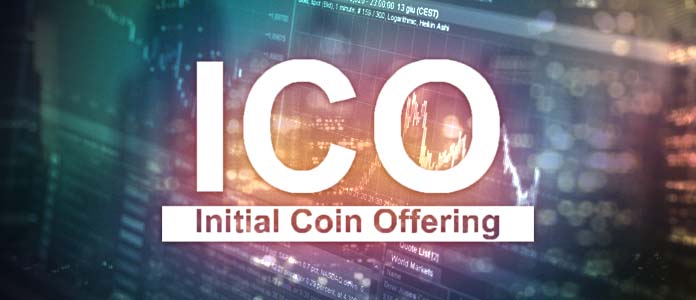
More and more people are realizing that they can make a lot of money from initial coin offerings. These people are taking advantage of the unregulated nature of the crypto space and the ease of creating tokens to launch ICOs.
In fact, it is estimated that over $1 billion has been invested in ICOs in the last 6-12 months, with many being unrealistic or downright fraudulent.
Unfortunately, many of these scammers are becoming more savvy and cleaning up their act by presenting a legitimate front –often with roadmaps, white papers, detailed information about their “projects” and other trappings that make their campaigns look legit. So, while it’s getting more difficult to spot the fake ICOs, it’s not impossible.
For starters, research thee company itself. If it’s been in business and has a good reputation, then you have a winner. If it’s new, has no reputation, and isn’t transparent about its processes, team or location, close that tab and keep looking.
Also, look at their management team and research them. Always go for those with well known and reputable team members. And if their promise or project sounds too good to be true, chances are it is.
4. Crypto Investment Packages

These are primarily bitcoin based and more formally known as bitcoin investment packages (BIPs). These are similar to cloud mining in the sense that they promise daily returns which are usually smaller percentages of your investment.
They often start out well to gain your trust, and then one day, disappear. This is another pyramid scheme designed to fleece you of your hard earned money. Users tend to fall for it by reinvesting their funds only to have their returns and payments gradually slow down and stop coming in altogether.
For these packages, we’ll say just walk away completely. And if you want to do this, just understand that it’s a short term Ponzi scheme and go in with your eyes open. For best results, get in at the very early stage, make your money, and cash out.
5. Pump and Dumps

These are projects created by individuals or consortium's for the sole purpose of driving the price wall up, and then cashing out once it reaches a predetermined price.
When you see cryptocurrency prices going up for no reason whatsoever, know that it’s a pump and dump in the making. If you want to partake, just make sure to get in early, enjoy the ride and cash out quickly. However, we don’t recommend investing in schemes like this at all.
There are communities that are solely dedicated to this. The go in and buy huge quantities of a certain cryptocurrency, watch the price artificially inflated and others get on board, then dump the coins after making a lot of money.
How To Protect Yourself From These Cryptocurrency Scams

There’s one simple thing to look for, and that is the use of cryptocurrency. Always lookout for the following when looking to invest in a cryptocurrency:
- An active community
- A development team dedicated to the project
- Transparency from the company
- Valid viable use case that solves actual problems
- History
Always research a cryptocurrency before investing in it. A simple search string like “[intended cryptocurrency] daily reddit” will be enough to show if they are legit or not. Also look for mentions in major news outlets, visible team leads with a track record of results in and/or outside the industry and backers.

